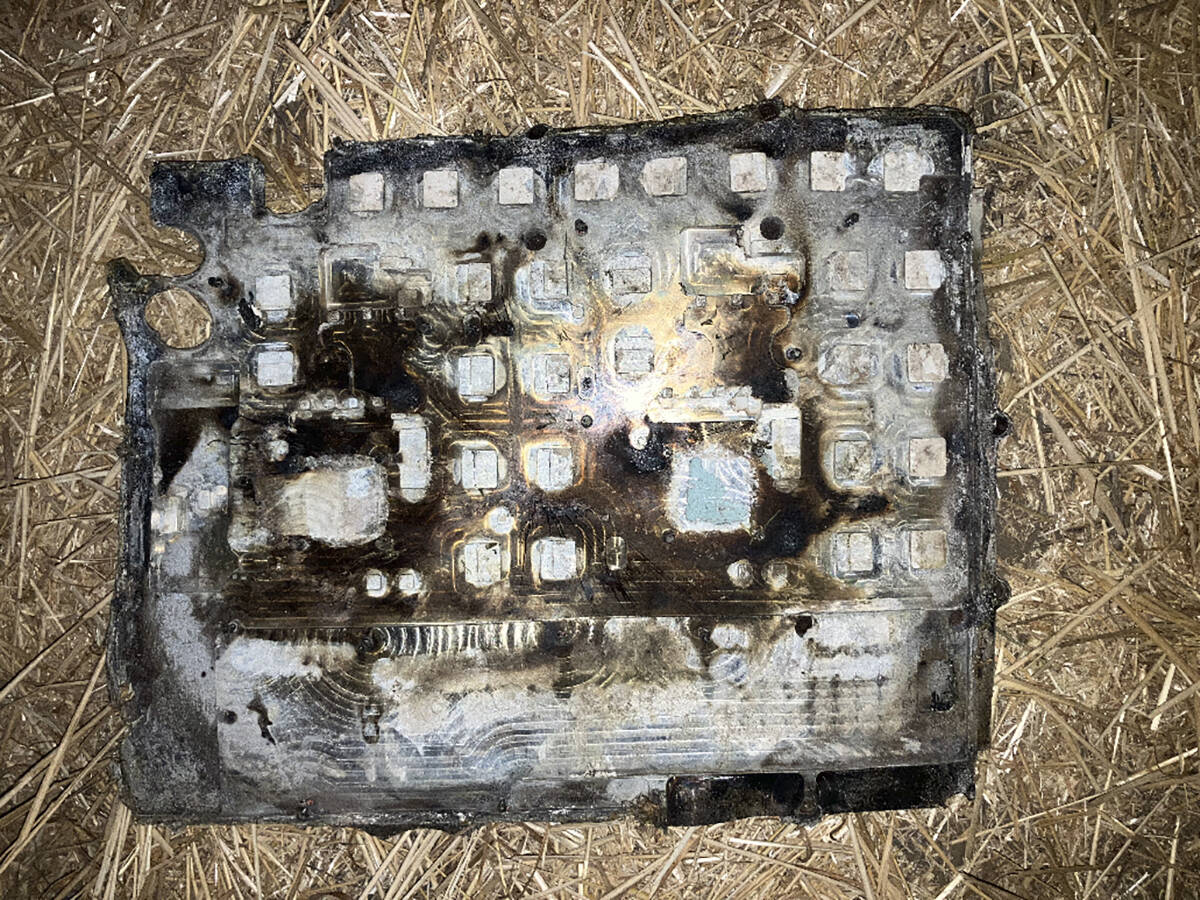Mother Nature pickpocketed billions of dollars from farmers in 2010, says a leading financial institution.
Doug Porter, deputy chief economist with BMO Capital Markets, hasn’t strayed from his August estimate that heavy rains and flooding have cost prairie farmers $3 billion.
“For many, this is a very real crisis. To put it in perspective, we are getting in the range of the economic impact of the BSE crisis seven years ago, which cost farmers $5 billion,” he said.
Other analysts say it’s too early to attach a financial loss to a growing season that started with flooding and ended with frost.
Read Also

Farmers asked to keep an eye out for space junk
Farmers and landowners east of Saskatoon are asked to watch for possible debris in their fields after the re-entry of a satellite in late September.
“Until we get the entire quality and quantity settled out here in Western Canada, it’s going to be hard to really do that,” said Bruce Burnett, director of weather and market analysis with the Canadian Wheat Board.
That picture is starting to materialize.
On Oct. 4, Statistics Canada issued its second production estimate of the year, forecasting an 18.5 percent drop in prairie wheat production and a 16.3 percent decline in canola production from 2009 levels.
There are also some initial quality estimates. Agriculture Canada wheat analyst Stan Skrypetz expects about 40 percent of CWRS wheat will make the top two grades compared to the 10 year average of 68 percent.
Burnett said 2010 reminds him of the 2004 and 2005 crop disasters, although higher grain prices due to severe production problems in former Soviet Union countries could partially offset this year’s disappointing yield and quality results.
Damage has been sporadic. There are many growers in Manitoba who harvested good crops and there are reports of huge yields in Alberta, he said.
While the macroeconomic impact of the weather woes is unclear, the microeconomic picture is in sharp focus for producers in central and eastern Saskatchewan, an area that was hardest hit by this year’s record rains.
Garth Burns planted half the acres he wanted to on his farm near Esk, Sask. But what went in the ground was almost drowned out.
“It’s like farming a swamp,” he said.
His canola was 30 centimetres tall when it was harvested and yielded 15 bushels per acre.
The biggest disappointment was his winter wheat.
“I thought 20 bushels per acre would be a safe level to pre-price and I’m short on that. It only yielded about 15,” said Burns.
Crop quality is poor. His first load of red spring wheat, which will probably be the best of the bunch, graded No. 3.
Burns estimates the 6,800 acres he farms with his son-in-law will generate about one-quarter of its normal annual revenue and that’s only because he held back some old crop to sell this fall.
Greg Marshall, president of the Agricultural Producers Association of Saskatchewan, said it is difficult to gauge the level of damage for farmers in his province but he can easily see it reaching billions of dollars.
“I’m being optimistic but I’m hoping that we’ll probably fall in around that 60 percent of normal for income,” he said.
In addition to the millions of unseeded and flooded acres and the fall frost damage, there are all sorts of additional harvesting costs.
“Guys have been putting tracks on equipment, buying grain carts, getting stuck and ruining machinery. So the expenses are mounting up pretty quickly,” he said.
Birds are also affecting the crop. “The waterfowl is just raising hell,”said Marshall.
Burns said his losses won’t end in2010. He anticipates 40 percent of his land will be too wet to seed next spring.
And he just received a quote of more than $700 per tonne for phosphorus fertilizer.
“Next year is really going to hurt,” he said.
Burns, who is a director of APAS, said he wants a revamped crop insurance program that covers farmers for their rising input costs.
Marshall said APAS will likely lobby federal and provincial governments for further financial assistance this fall once it has a better idea of farmer losses.
“You most likely will be hearing from us. Right now it’s kind of wait-and- see,” he said.

















